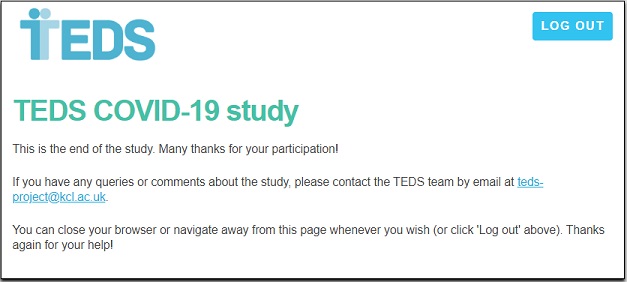Login and consent
The link provided to each twin, in the email invitation, took them to the welcome and login screens shown below (differing slightly for differing phases of the study). Note that, for the benefit of twins, the study was referred to throughout as the TEDS Covid-19 Study.
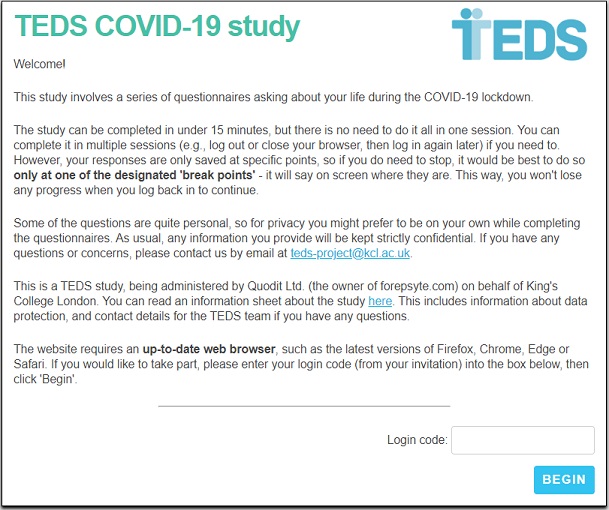
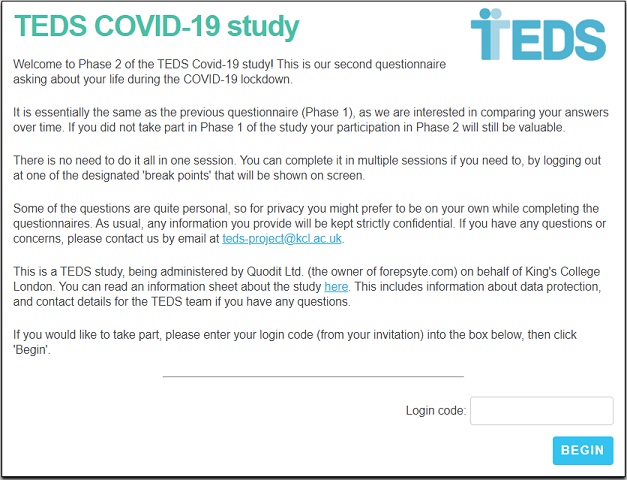
Note that there is a link on each phase's welcome screen, and on the consent screen below, to the study's information sheet: phase 1 information sheet, phase 2 information sheet (pdfs). In the invitation email, for each phase of the covid study, each twin was provided with a unique (hence identifying) login code. In order to proceed, the twin had to enter the login code in the box and click on the "Begin" button. They were then taken to the consent screen as shown below (this example is from phase 1, but there were no significant changes for later phases):
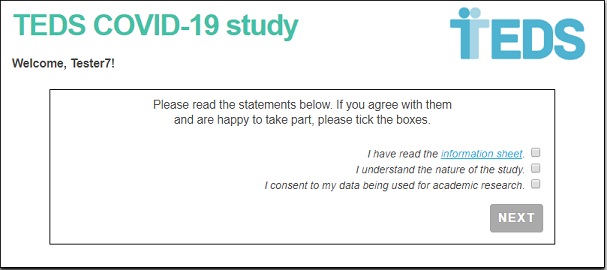
By the consent stage, the twins have logged in and identified themselves, so the welcome message at the top of the consent screen can greet them by name (forename only). In this screen, twins can give consent and proceed to the activities by ticking the three boxes and clicking on the "Next" button.
After completion of this consent, twins are taken directly to the first section of the questionnaire.
Other questionnaire features
The screen shot below illustrates a fairly typical page in the covid questionnaire. At the top of the page, we see that the section being completed is called "Life changes" and that this is the 3rd of 8 sections in the questionnaire. The progress bar shows how much of the current section has been completed, and how much is still to be completed. Similar information is provided just below, where the heading "Life changes" is followed by the information "(Page 1 of 6)", hence this is the 1st of six pages in the "life changes" section of the questionnaire.
On this page, questions are numbered 1-4, although numbering is not used throughout the questionnaire. Each question has clickable responses, for example "Yes" or "No" in question 1.
This page also illustrates a questionnaire branch. So far, only question 1 is enabled and questions 2-4 are greyed out (disabled). On answering "Yes" in question 1, questions 2-4 will become enabled; but on answering "No", questions 2-4 will remain disabled and are skipped.
Subject to branching, it is compulsory to give a response to almost every question in the questionnaire (exceptions are rare, and are labelled as optional where they occur). In sensitive personal questions, the responses include a "prefer not to answer" option. If a compulsory question has not been answered, then clicking "Next" will bring up a reminder message, highlighting the unanswered question, rather than going to the next page.
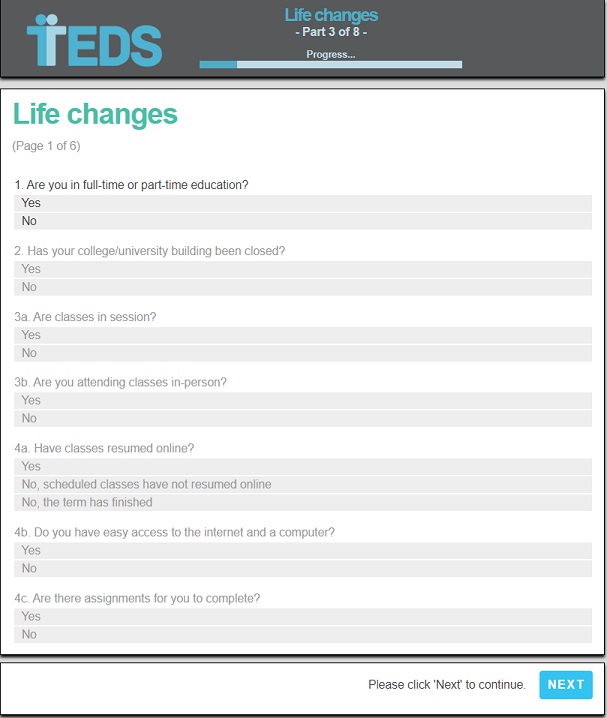
The example below, from the middle of the Relationships section in the phase 2 questionnaire, shows a typical example of data validation in action, and illustrates the use of "prefer not to answer" response options.. On almost every page of questions, it was compulsory for twins to answer every question before proceeding to the next page (in rare cases of optional questions, this was explicitly stated on screen). Where questions were sensitive or very personal in nature, as here, a "prefer not to answer" response option was included, which twins could select instead of the other responses. In the image below, the first, third and fifth questions have been answered, then the "Next" button was clicked. The validation controls, built into the web server programming, have prevented this page from being submitted. Instead, the message "Please complete the highlighted question(s)" appears in red near the top of the screen; and the questions still to be completed are highlighted with a pale red background. In order to proceed from this point, the participant would have to give a response to each of those three questions (including the "prefer not to say" response) then click on "Next".
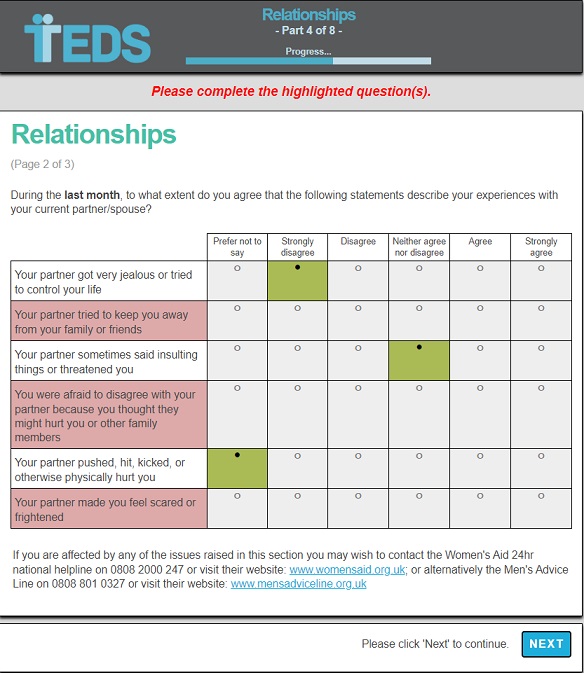
The screen shot below illustrates a "break point" in the questionnaire. A break point occurs after completion of each of the 8 questionnaire sections. As explained on screen, at a break point the twin can log out then return to continue later without loss of data. Note that closing the browser in mid-section causes loss of data for that section; on logging in again, the twin would have to re-start the same section.
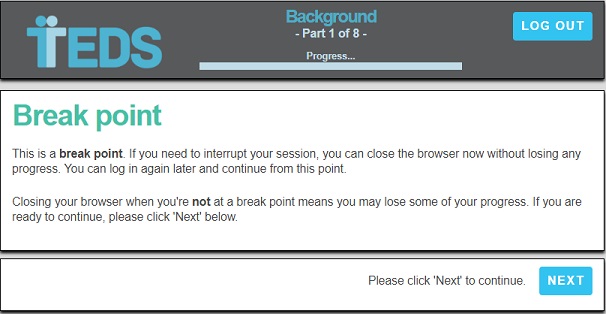
The screen shot below illustrates the end screen for the covid phase 1 questionnaire.
